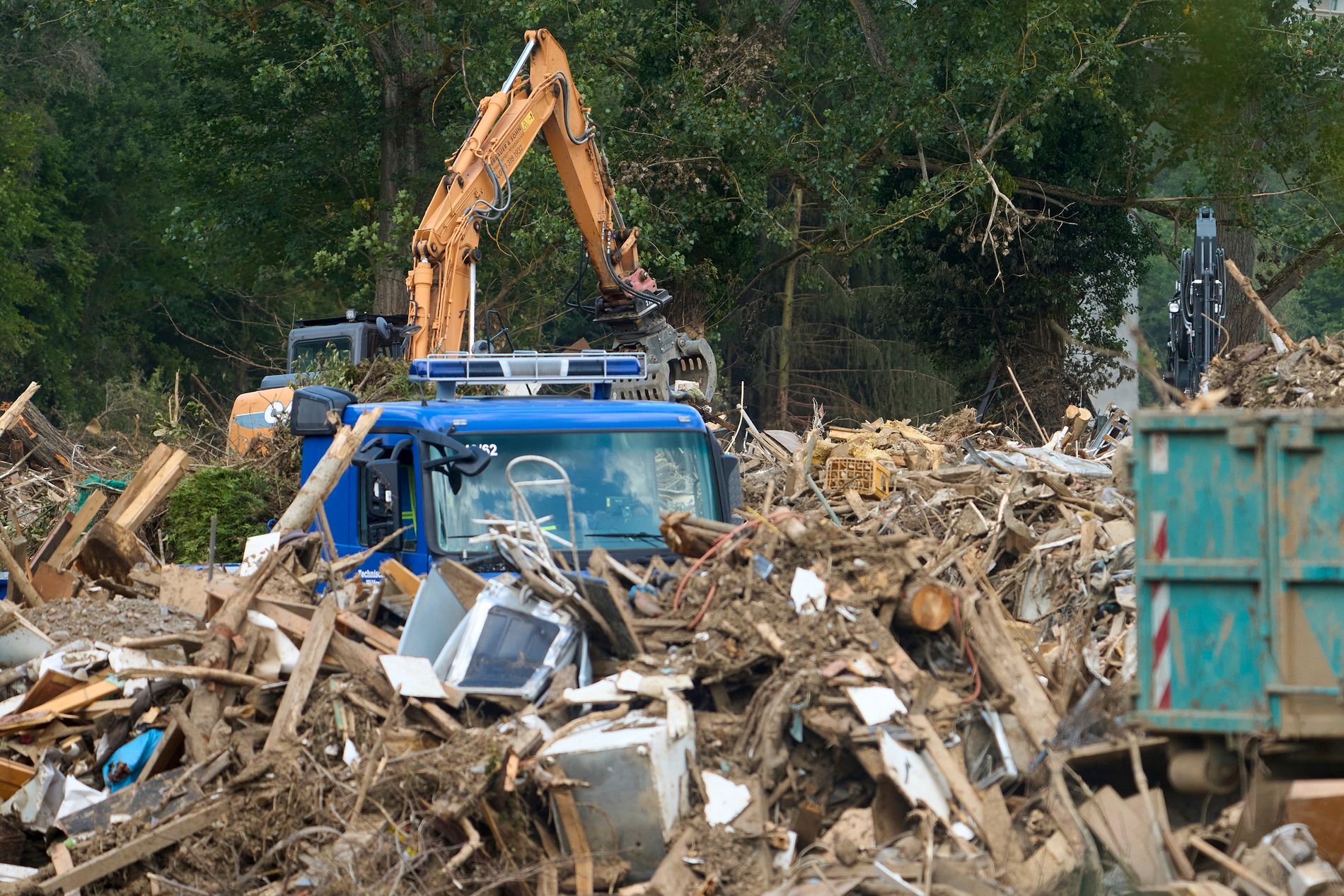TAKES TIME: Heavy machines have been deployed in the clean-up work after the flood in southwestern Germany. Foto: Thomas Frey /dpa via AP / NTB
––
Environmental stations near the villages that were destroyed in the flood in Germany are struggling with huge scrap heaps, equivalent to one year of waste.
–
– There has never been anything like this in Germany, says Sascha Hurtenbach while heavy machinery works behind him to reduce a mountain of scrap.
He runs the environmental station in Niederzissen, 20 kilometers from the Ahr Valley, where the river cascaded over its banks until the night of July 14 after an extremely heavy rainstorm. Streets turned into rivers, and dozens of inhabitants died.
– At the moment, we have 35,000 tonnes of scrap that has been retrieved from the disaster area, and we have already sorted and driven the same amount to landfills, he says and adds that there is still a lot left.
Along the road to the Ahr Valley, the mud has now turned to dust, and long columns of trucks drive back and forth instead of the tourists who used to come to the picturesque area.
A tractor on its way across the river Ahr in the devastated city of Kreuzberg while the clean-up after the flood in southwestern Germany continues. Foto: Thomas Frey / dpa via AP / NTB
––
The remnants of ruined life are piled high on the environmental station – dishwashers, sofas, refrigerators, chairs. They testify to the catastrophe that in total claimed at least 186 lives in southwestern Germany.
– It’s completely full. We can not take in more than what we drive away at any given time, says Hurtenbach.
Yet that is what he has taken care of, just the beginning. Remains of houses, trees and broken branches are still waiting outside the houses that were hit.
170 people have been involved in the clearing work, four times more than normal. The environmental station is in operation seven days a week, but is limited by the availability of trucks.
Of the 130,000 inhabitants who flock to the environmental station in Niederzissen, only 30,000 are directly affected by the flood. But he still has to empty the garbage at all the others as normal.
–


